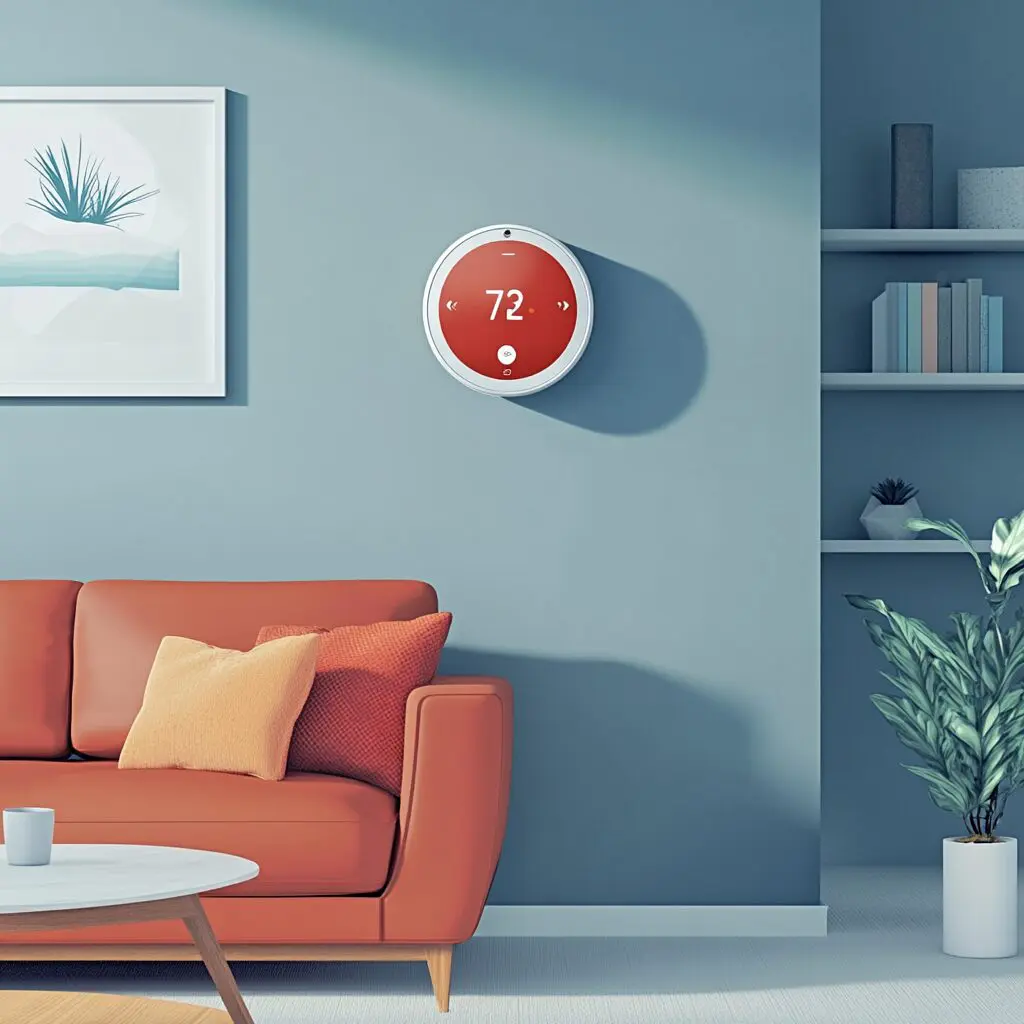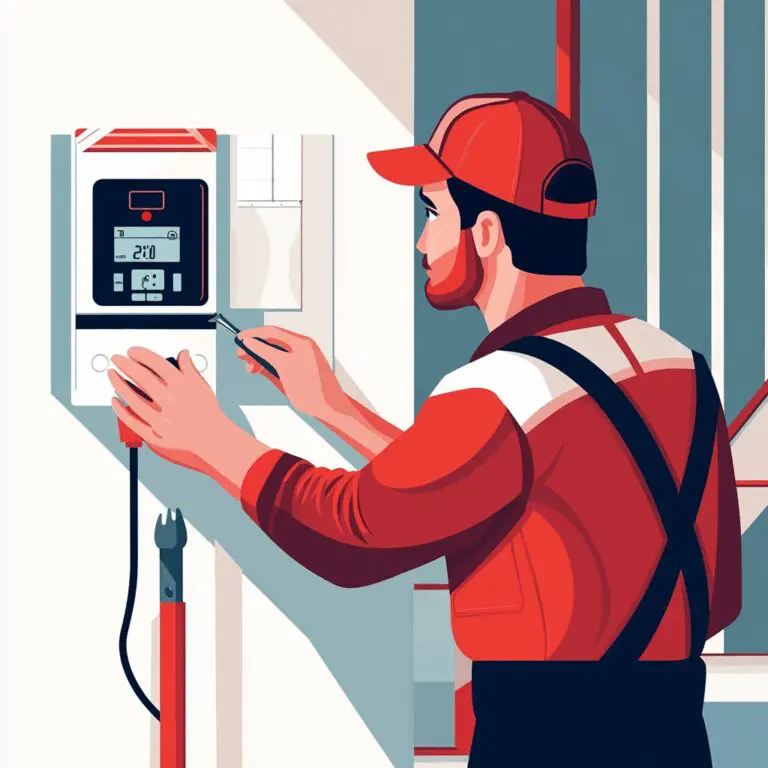- Serving The Fraser Valley & Lower Mainland
- Gas – LGA0103126
- Refrigeration – LBP0001017
- Boiler – LBP0204397
24hr Emergency Service
Click to Call Dispatch
Click to Call Dispatch

For homeowners in Chilliwack and the Fraser Valley who prioritise year-round comfort, smart thermostats have become a common recommendation. But are they truly a valuable addition, or just another high-tech accessory?
This blog examines the practical value of smart thermostats, enabling homeowners who prioritise comfort to determine if they’re the right fit.
A smart thermostat goes beyond simple temperature control. These devices learn your household habits, adjust automatically based on occupancy, and allow remote access via smartphone apps or voice assistants. Unlike traditional programmable thermostats, smart thermostats utilize sensors and algorithms to optimize the indoor climate based on your daily life, rather than just a static schedule.
They can even monitor local weather patterns and respond accordingly, making them well-suited for regions like Chilliwack, where mornings can start cool and afternoons warm up considerably. In this context, comfort isn’t just about temperature, but about consistency, predictability, and avoiding unnecessary heating or cooling.
Unlike traditional models, smart thermostats react to your habits and changing weather conditions — keeping your home comfortable without constant adjustments.
For those who prioritize comfort, the benefits of smart thermostats lie in their ability to adapt. Devices with geofencing capabilities can detect when household members are on their way home and adjust temperatures in advance. Others track room-by-room occupancy and make nuanced adjustments to ensure no space is being heated or cooled unnecessarily.
Some models can also adapt to your lifestyle over time, adjusting their schedules as they observe changes in your routine. For example, if your weekday wake-up time shifts seasonally or you begin working from home part-time, the thermostat will learn and adjust its behaviour accordingly.
These learning behaviours aren’t just about efficiency — they reduce the likelihood of overuse and improve daily comfort without you having to think about it.
In the Fraser Valley, homeowners experience four distinct seasons, often with quick transitions between them. Summer heat waves can be followed by unexpected cool fronts, and damp winters demand constant but efficient heating. A smart thermostat, when programmed correctly, moderates indoor comfort while easing the workload on HVAC systems.
By adjusting temperature settings incrementally and anticipating changes before they occur, smart thermostats support steadier internal conditions. This proactive approach contrasts with reactive heating or cooling cycles that can create sharp fluctuations in comfort and increase wear on system components. Especially in homes with heat pumps, which operate best under consistent conditions, smart thermostats enhance overall system performance and longevity.
Modern smart thermostats offer an array of features that support daily life. Zoned temperature control enables you to set different temperatures in various areas of your home, thereby reducing waste and enhancing comfort. Adaptive scheduling ensures the thermostat evolves with your habits over time, while integration with air quality monitors and ventilation systems contributes to a healthier indoor environment.
The ability to track energy use through dashboards and receive real-time alerts when temperatures fall outside set ranges helps homeowners stay informed and in control. Whether you prefer voice commands or automatic adjustments, these features enhance the usability and value of the thermostat beyond temperature alone.
There’s a common assumption that smart thermostats are only for tech-savvy users. In reality, the user interfaces on most leading models have been designed with simplicity in mind. They typically offer touchscreen displays, guided setup processes, and mobile apps that provide clear, real-time feedback.
More importantly, once configured, smart thermostats often require less daily input than conventional models. You don’t need to repeatedly adjust the settings — the thermostat does the work of learning and optimizing, allowing you to focus on comfort without constant oversight. For those who still prefer occasional manual control, most devices allow you to override schedules temporarily or permanently, ensuring flexibility.
Today’s smart thermostats are designed to be as intuitive as your smartphone — often requiring less input once installed.
Although energy savings are often the headline benefit, smart thermostats also help reduce mechanical wear by minimizing excessive cycling, which in turn can decrease repair needs over time. They promote quieter system operation by maintaining steady temperature levels and reducing fluctuations that stress HVAC components. Enhanced coordination with indoor air quality devices ensures a more balanced and comfortable living environment.
By understanding how and when energy is used, homeowners can also make informed decisions about temperature settings, leading to better overall management of comfort and cost.
Despite their benefits, smart thermostats may not be ideal for every household. Homes without stable internet access may experience connectivity interruptions that limit functionality. Older HVAC systems might require additional components or upgrades to be compatible, and households with irregular occupancy schedules might not benefit from automated routines to the same extent.
For these cases, simpler programmable thermostats may still provide improved comfort and energy control without requiring extensive infrastructure or significant upfront investment. The key is to evaluate your home’s specific needs and technical setup before making a decision.
Not every home setup supports smart automation. A professional assessment can help identify whether your system is compatible before you invest.
Ensuring compatibility between a smart thermostat and your existing HVAC system is critical. A professional installation helps verify that low-voltage wiring is correctly connected, that your system supports advanced features like multi-stage heating, and that the thermostat’s sensors are accurately positioned to measure indoor temperatures. Proper calibration is also important, particularly in homes with unique layouts or varied insulation.
Professional configuration provides peace of mind and can prevent common errors that lead to inefficiency or system malfunctions. It also allows homeowners to fully understand how to use and benefit from their new device from the outset.

Whether or not a smart thermostat is “worth it” depends on how you define value. For homeowners who prioritize comfort, control, and long-term efficiency, smart thermostats offer tangible advantages, especially in climates with diverse seasonal demands, such as Chilliwack’s.
Instead of viewing these devices as gadgets, consider them part of a broader approach to managing your home’s environment. Used thoughtfully, they provide actionable insights, more consistent temperatures, and the convenience of automation. In this way, they support not just heating and cooling, but the daily comfort and control that make a house feel like home.
Most smart thermostats cost between $200 and $400. Professional installation typically adds $150 to $250, depending on the system’s complexity and wiring requirements.
Some models support DIY installation, but incorrect wiring or configuration can lead to performance issues. A professional installation ensures a safe, correct setup and integration with your HVAC system.
Many smart thermostats are compatible with older systems, but it’s best to have a technician assess your setup. Some systems may require adapters or updated wiring.
Yes. On average, homeowners save 10–15% annually on heating and cooling costs through optimized scheduling, occupancy-based adjustments, and energy reporting.
Models such as ecobee and Nest consistently perform well in this region due to their adaptive learning, humidity control features, and compatibility with common residential systems.